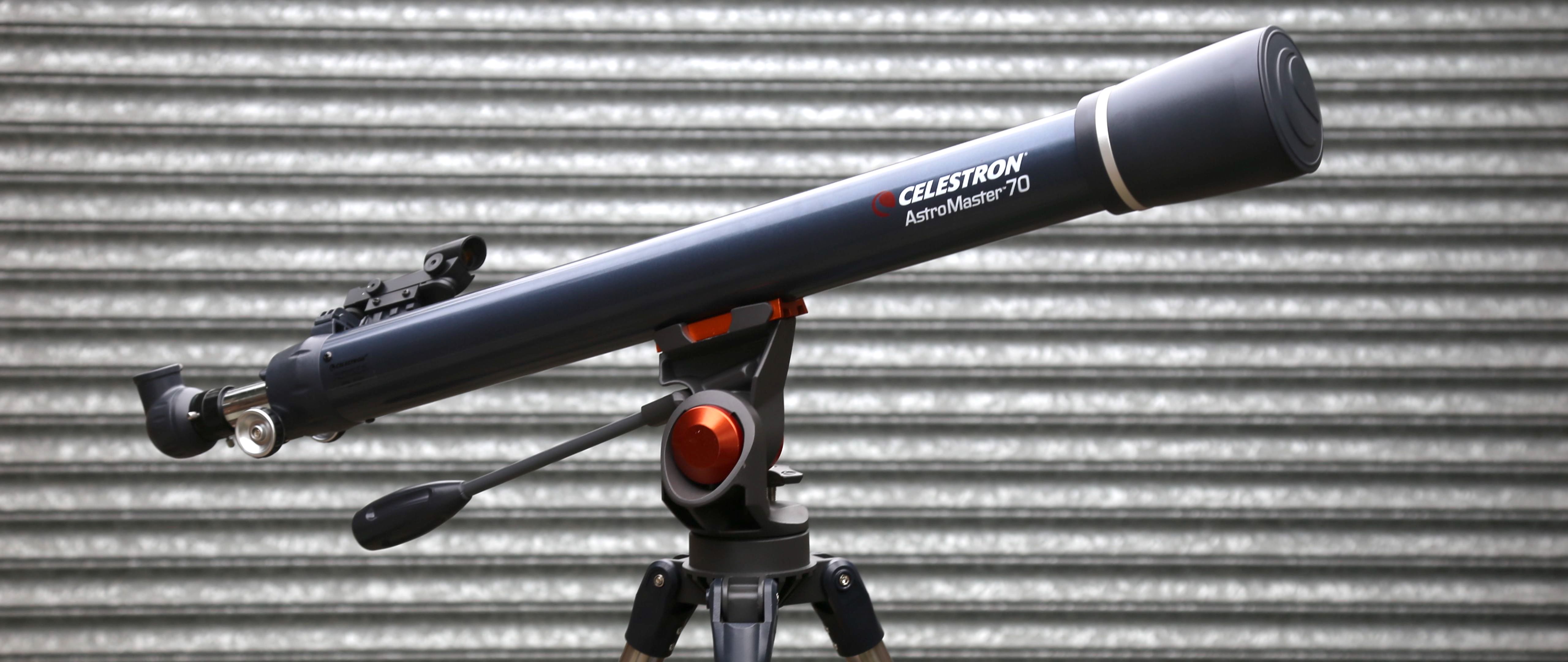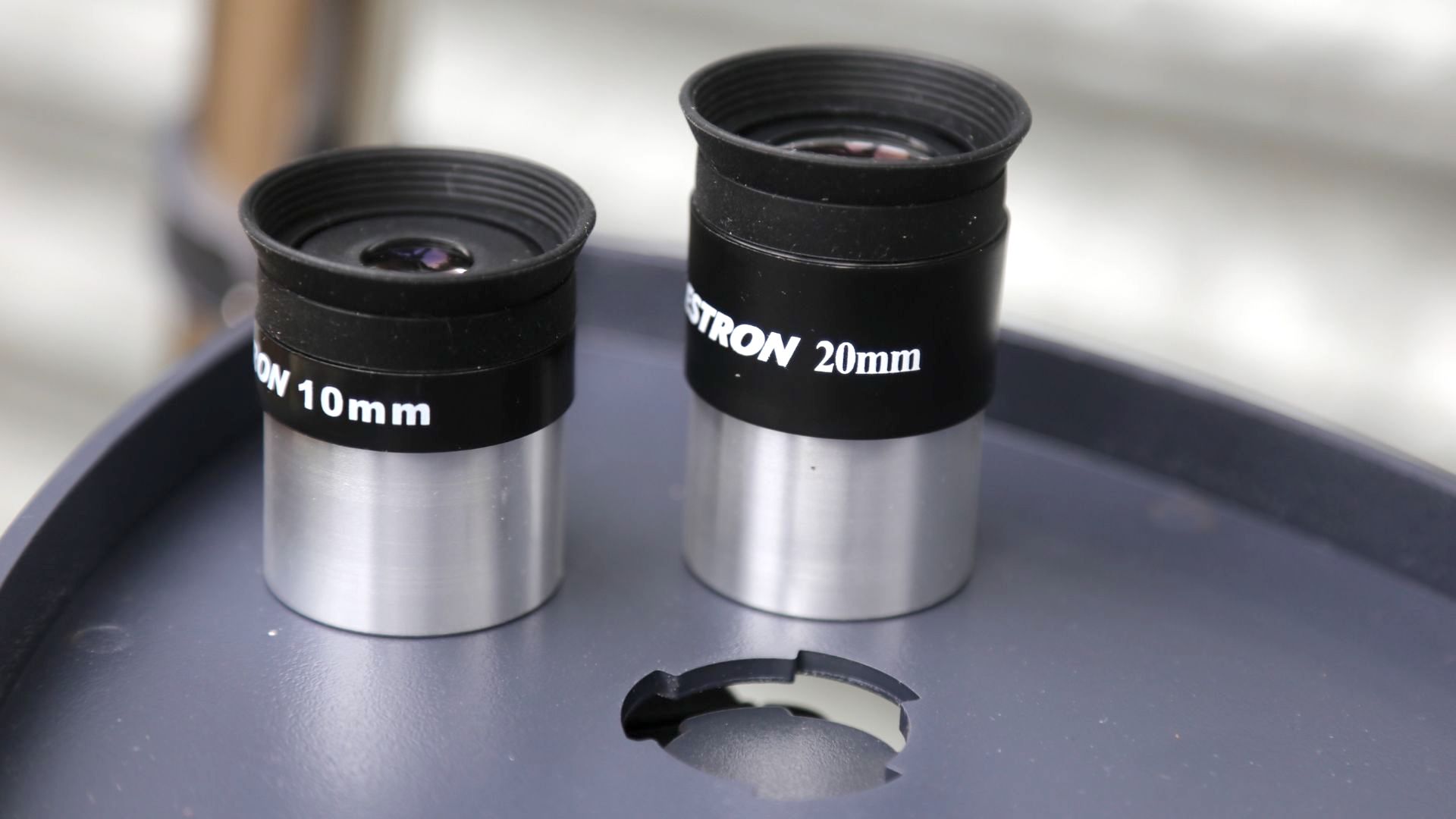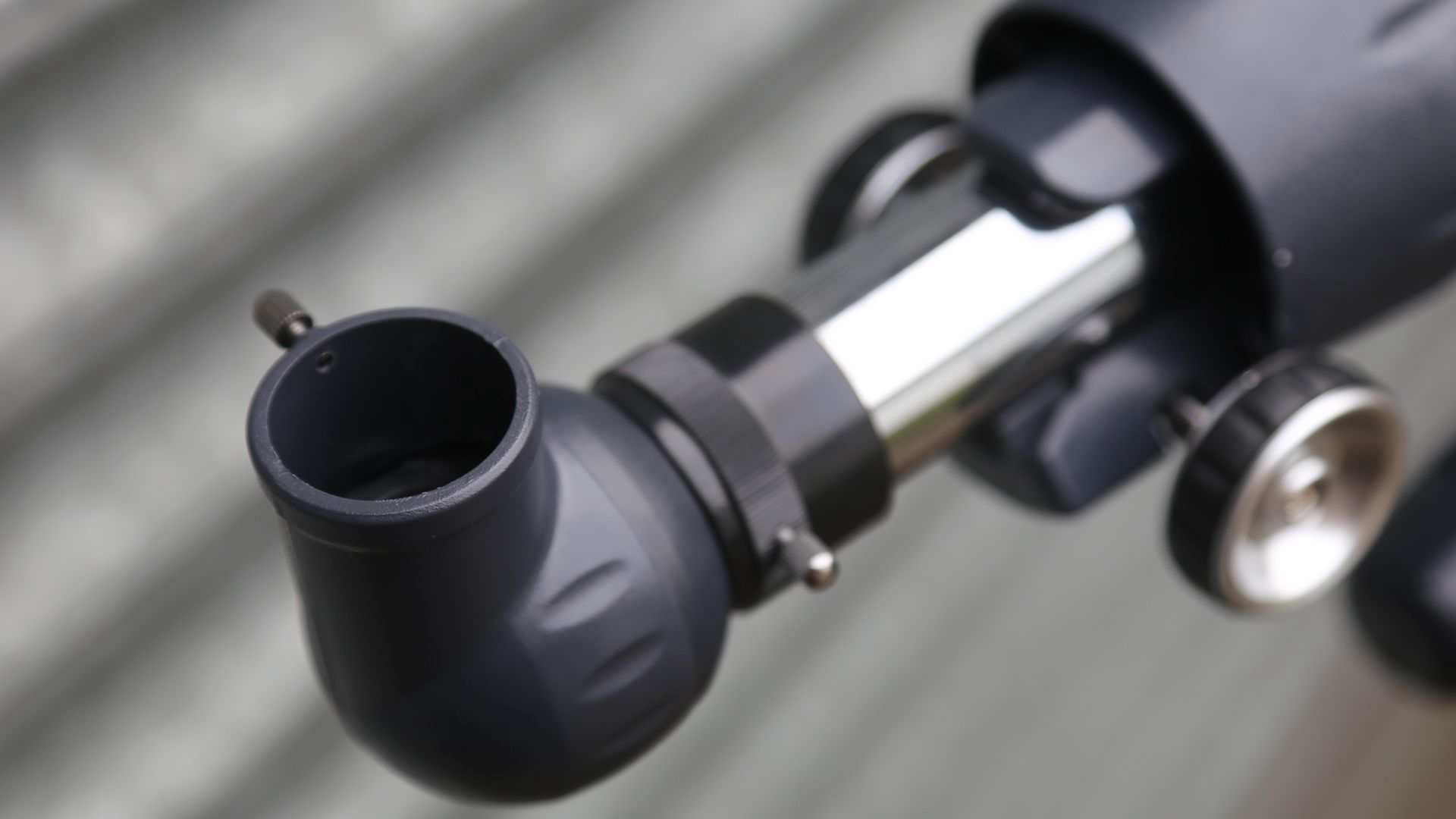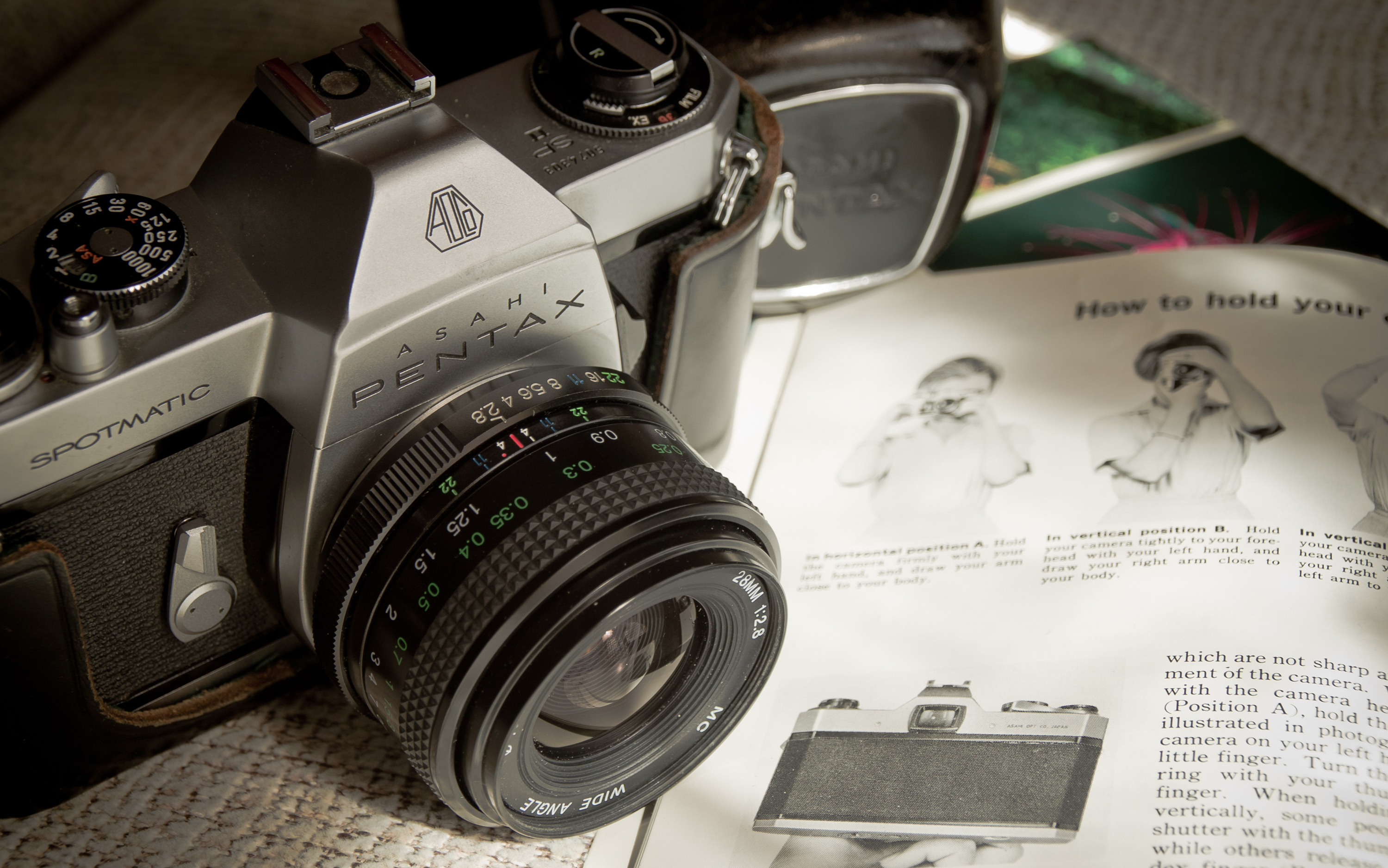Digital Camera World Verdict
It's rare to see affordable telescopes like the AstroMaster 70AZ. Although the manufacturer Celestron makes many cut-price telescopes aimed at beginners, this refractor has something unusual about it. Although its 2.7-inch/70 mm aperture is common at this price, the length of its optical tube is not. With a focal length of 35 inches/900 mm, it means a focal ratio of just f/13. That's no good for faint objects deep in the cosmos, but it is great for brighter planets and the moon.
Pros
- +
Affordable price
- +
Ideal for planets and the moon
- +
Shows true colour objects
- +
Lacks chromatic aberration
Cons
- -
Low quality bearings
- -
Overreach and droop
- -
No slow motion controls
- -
Basic accessory rack
Why you can trust Digital Camera World
As you might expect on a beginner telescope the AstroMaster 70AZ comes with everything you might need to do some simple and easy observing. There are two eyepieces in the box, 20 mm and 10 mm. Both Kellner eyepieces, the former reaches 45x magnification and the latter 90x magnification.
Since this is a refractor telescope, which uses lenses to form an image, you have to look through the tube from behind it. That can make it very tricky when you're looking at objects directly above you. In practice, that's not really an issue for this telescope because it's designed to get the best possible views of planets and the moon, which tend to be viewed when much closer to the horizon. That said, it's good to see an L-shaped image diagonal in the box, which allows the viewer to see the object in the eyepiece without having to kneel on the floor below the telescope.
On the front of the tube is a 4.5-inch/11cm dew shield that protects the lens from moisture, but also helps shield the optics from any ambient light – such as streetlight – that might affect its views.
Telescopes come with all kinds of mounting designs, from equatorial mounts designs that track with the motion of our planet, to motorized telescope mounts that automatically slew to what you select on a smartphone app. The AstroMaster 70AZ does none of these things. Instead it has a rather basic, both solid tripod and a simple panhandle for positioning the telescope using left, right, up and down (alt-azimuth) before fixing the bearings to lock it in place.
Specifications
Optical design: Refractor
Aperture: 2.76”/70 mm
Focal length: 35”/900 mm
The best camera deals, reviews, product advice, and unmissable photography news, direct to your inbox!
Focal ratio: f/13
Eyepiece focal length: 0.8”/20 mm (45x) and 0.4”/10 mm (90x)
Total kit weight: 7.6 lbs/3.44 kg
Mount type: manual altazimuth
Celestron AstroMaster 70AZ: performance
With an aperture of just 2.7-inch/70 mm and a focal ratio of f/13 it gives underwhelming views of everything bar planets and the moon. However, it's got deeper problems than that. The tripod is reasonably sturdy and the construction feels a lot more solid than many budget setups, but in practice, there are still significant issues with overreach and droop. The fine controls help a little, but they’re fighting a losing battle. Consequently, the AstroMaster 70AZ is not particularly easy to aim in the first instance nor keep centered on an object as Earth rotates away. It desperately needs slow-motion hand controls to help get and keep targets in its field of view. What we did like about the AstroMaster 70AZ compared to other budget achromatic refracting telescopes was its skill at banishing so-called ‘false color’. While rivals show a purplish line around bright objects the AstroMaster 70AZ shows Jupiter and Saturn (its primary targets given its limited abilities) looking clean and natural. However, they lack sharpness and the image diagonal creates a touch of glare.
Celestron AstroMaster 70AZ: verdict
The AstroMaster 70AZ is designed to be used on planets and the moon. That explains its long length and it also helps the AstroMaster 70AZ show solar system objects without much glare of false color. However clean its images, they’re not particularly sharp and its lack of skill with the deep sky will disappoint some beginners. Add to that bearings that make it difficult to lock in place and we struggle to recommend the AstroMaster 70AZ.
Read more:
• Astrophotography: How-to guides, tips and videos
• Astrophotography tools: the best camera, lenses and gear
• The best lenses for astrophotography
• The best star tracker camera mounts
• Best equatorial mounts
• Best deep-space telescopes
• The best light pollution filters
• The best CCD cameras for astrophotography
• The best spotting scopes
• The best binoculars
• The best microscopes

Jamie has been writing about photography, astronomy, astro-tourism and astrophotography for over 15 years, producing content for Forbes, Space.com, Live Science, Techradar, T3, BBC Wildlife, Science Focus, Sky & Telescope, BBC Sky At Night, South China Morning Post, The Guardian, The Telegraph and Travel+Leisure.
As the editor for When Is The Next Eclipse, he has a wealth of experience, expertise and enthusiasm for astrophotography, from capturing the moon and meteor showers to solar and lunar eclipses.
He also brings a great deal of knowledge on action cameras, 360 cameras, AI cameras, camera backpacks, telescopes, gimbals, tripods and all manner of photography equipment.






